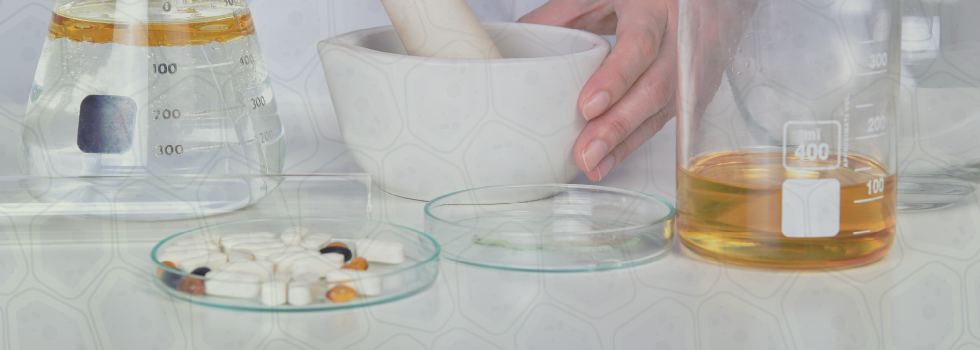Promotional Features
Why and how should we invest in the ‘Beauty from Within’ trend?
A wellness-focused consumer drives the demand for clinically validated evidence behind products, extending to traditional beauty areas such as skincare.
According to a recent market insight report by Insight AceAnalytic1 we can expect a significant growth of the global beauty ingestible market size with a CAGR of 11% from 2022 to 2030. Based on this projection, it is easy to see why the ‘Beauty from Within’ trend means business.
Having a healthy balanced diet impacts how we look and feel; this is known from our predecessors, who have passed on their wisdom through the generations. In today’s fast-paced lives, consumers don’t always make the right food and lifestyle choices, such as getting enough sleep or having access to nutritious ingredients on a daily basis. These lifestyle factors can have a negative impact on our skin and overall appearance. At the same time, consumers have never been so well informed as they are today and know what they should be doing - supplements can help to achieve their goals.
The ageing population worldwide is expected to fuel demand for nutricosmetics due to the rising preference to live a healthier lifestyle for as long as possible, with a ‘well ageing’ approach. According to a report conducted by the United Nations (Figure 1), one in six people in the world will be over the age of 65 by the year 2050, compared to one in 11 in 2019. Ageing is a natural process and one we all know is inevitable, whether we like it or not. However, this process can be slowed down by making the right lifestyle, skincare and nutrition choices, which promote better health and achieve the inner glow that many strive for.
Demand for evidence-based claims
Over recent decades, there have been numerous clinical studies conducted to explore the gut-skin axis and provide scientific evidence to support the concept that the gut microbiome and the nutrients from food and supplements can have an impact on the condition and appearance of the skin. This is paving the way for ‘Beauty from Within’, laying a solid foundation of credibility on which high performance products can be built on. Ingredient suppliers are investing in research to explore the potential of their active compounds in the nutricosmetic space, in order to provide high quality, effective ingredients which will deliver strong product claims and a high return on their investment.
Consumers want credible and effective products, along with scientific evidence to provide the confidence they need before making a purchase. Atlantia Clinical Trials has seen a 14% increase over the last 12 months in companies wanting to conduct studies exploring the effect of nutritional supplements on aspects of skin health, such as hydration levels, skin elasticity, skin texture, radiance and wrinkles. The combination of topical products and ingestibles is another growing area to explore the synergistic effects of enhancing beauty from the inside and outside. With carefully designed clinical studies, companies can obtain stand-alone claims for each product and combination claims for products designed to work together - a clever marketing approach.
Beauty from Within research trends
To examine product innovation trends relating to ‘Beauty from Within’, we need to discuss clinical research trends. Human clinical studies are the highest standard of research to validate or substantiate health claims, and also provide the consumer with confidence. The Atlantia team looked at registered human studies under the term “cosmetic” and identified 89 relevant studies of which 79% were interventional studies. Figure 1 shows a breakdown of their characteristics.
Based on the skin endpoints and biomarkers selected, the data was categorized into two groups: wellness and symptomatic trials. Acne, anti-ageing effects or hydration were the predominant researched conditions on the wellness category. On the other hand, the symptomatic category targeted conditions such as keratosis, eczema, dermatitis and psoriasis.
Many companies have expressed their concern to the Atlantia team about the clinical research costs and return of investment. On the Beauty from Within space, one size shouldn’t fit all. Having the expertise to discern what is required and relevant for a specific product, condition and population can have a huge impact on the research budget, and consequently on the product’s ROI.
Clinical studies have associated set-up costs (for example, study documentation, data collection platform, recruitment asset production, or screening tools, just to mention a few). Nevertheless, most elements of a human clinical study budget can vary according to the number of participants enrolled on the trial and the number of visits.
In terms of clinical research trends presented by the Atlantia team, the average participant enrolment varied depending on the studied condition category (symptomatic or wellness) and the interventional product type (dietary supplements, topical or a combination of both products).
For Beauty from Within trials, considered as the intersection of wellness and dietary supplement trials, the average enrolment was 61 participants. However, there was some variation depending on the condition studied. Generic skin care trials enrolled an average of 28 participants. Conducting human clinical studies in the Beauty from Within segment does not have to be expensive and can provide a robust proof of efficacy to the final consumer.
Pre-pandemic, the multi-step skincare routine was a popular trend which saw consumers using up to 10 different products every morning and evening. Now the perspective has changed to a more simplistic and holistic approach. Trend analytics notes a 106% rise in web searches for ingestibles from 2021 and a 44% increase in supplements formulated with mood and beauty-boosting benefits. Even the sub-trends for a ‘no make-up look’ and ‘clean beauty’ are embracing ‘Beauty from Within’ as consumers want to look good naturally without having to rely on makeup.
An interesting opportunity also arises to tap into the male segment for ingestibles. Whilst some men are wearing makeup to enhance their natural features, most men are still not comfortable with this idea and prefer a more subtle approach to looking good and take a supplement to boost their complexion. The term ‘beauty’ may not be as appealing to the male market; a more appropriate term for ‘Beauty from Within’ could be expanded to ‘Healthy Skin from Within’ to capture a broader audience that spans all age groups and genders.
All ages and stages
Skin health is essential across all age groups, ethnicities and genders. From teenagers with acne outbreaks to women going through the menopause, each consumer type has its own specific needs which can be addressed though supplements, with carefully selected ingredients to target requirements. As ’product personalization’ rises, consumers are seeking products that feel tailored to their needs. At-home genetic testing kits - where consumers can do a simple blood test or biological sample analysis to identify what areas of their genetic predisposition need to be enhanced - are becoming mainstream. Consumers can then select the most relevant products that are suitable for their individual needs and boost their beauty potential
There are a multitude of potential consumer targets and therefore endless opportunities to explore products in the ‘Beauty from Within’ market. We can also expect to see more products targeted towards hair and nails, as there is still plenty of scope to grow this segment.
A cross-functional approach to product design
Consumers don’t think in categories as many product developers do. It is a welcome change to see the convergence of skincare and wellness product development, combining topical skincare and supplements, to create consumer-centric product solutions. This will lead to a longer-term loyal customer base for brands that adopt this approach.
In addition to the product categories collaborating, the Atlantia team is also seeing an increase in different industries coming together to design products, bringing the pharmaceutical, cosmetics and food industries together into one common focus. It is an interesting time for companies to share knowledge and innovate beyond their own limitations.
There are new product formats entering the market which make the product experience more pleasurable and convenient. WGSN's yearly report for 2021 predicts that "edible skincare in the shape of sweets and health bars" will appear on the market this year. The majority of vitamin, mineral and supplement products are still in traditional capsules and tablet format however beverages, gummies and chewable formats are all gaining in popularity and bringing a playfulness into the product experience.
A sustainable approach
One of the biggest considerations that needs to be factored in for any product development team is sustainability. Sustainability needs to be at the core of product development and not an afterthought. From a communication perspective, the storytelling aspect plays a key role in conveying how well the brand cares about the planet and the people living on it. It’s about creating that emotional connection with the product, so that the consumer can feel good about using the product, from both an efficacy and ethical perspective.
In summary, there are multiple opportunities to deliver innovative products in the ‘Beauty from Within’ space and drive this segment to its full potential. It is an exciting area to watch as it evolves and merges with other sectors.
References
1. The Beauty Ingestible Market worth US$8.3 billion by 2030, InsightAce Analytic.



